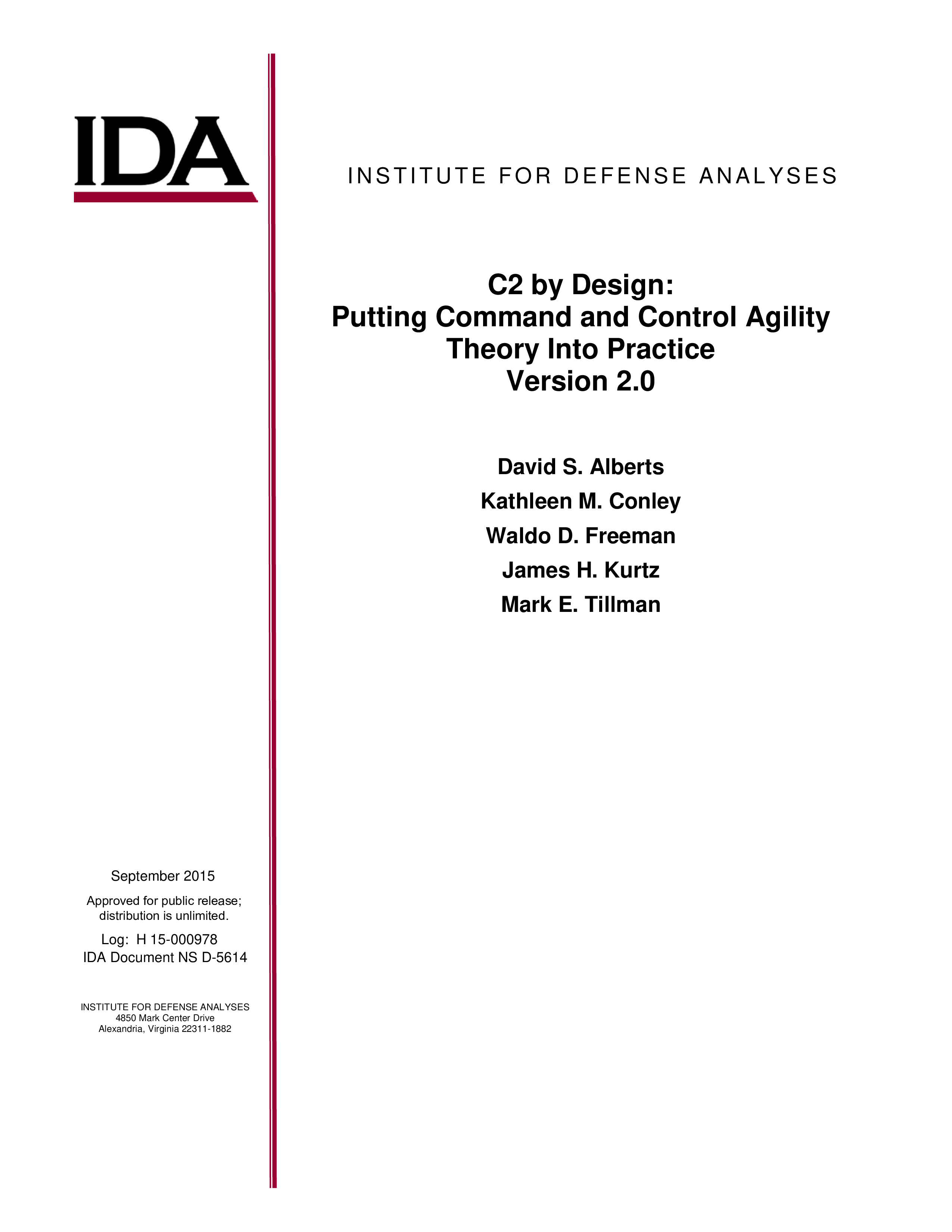Command and control (C2) is said to be the means by which a commander recognizes what needs to be done and sees to it that
appropriate actions are taken. Operational design methodology helps reduce uncertainty in a complex operational environment and
enables the commander to develop an operational approach—a description of the broad actions the force must take to achieve the
desired military end state. Executing the operational approach often involves actors and entities not under the authority of the
commander, which calls for a tailored C2 approach that takes into account all the players important to mission success and that
defines the nature of the linkages required. C2 Agility Theory holds that such a C2 approach can be characterized using three
fundamental variables: (1) how decision rights are allocated; (2) how entities interact with one another; and (3) how information is
distributed. This handbook has as its central premise that a unique and tailored C2 approach can and should be associated with
every operational approach. It describes how the operational design process that produces the operational approach should be
leveraged to develop a corresponding C2 approach. Both are based on prevailing circumstances and may need to be changed as
circumstances change, necessitating continuous assessment of both the operational approach and the C2 approach.

